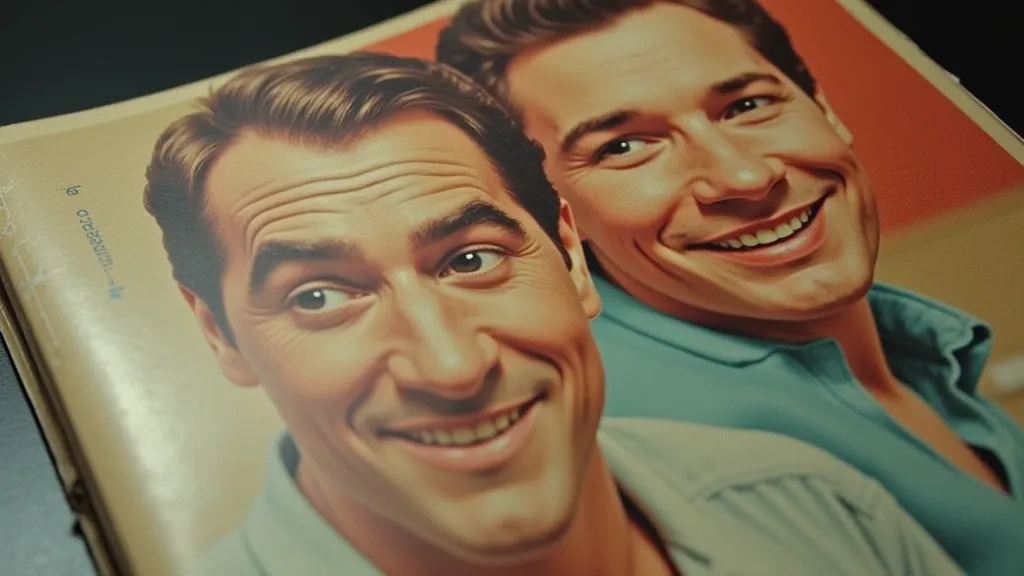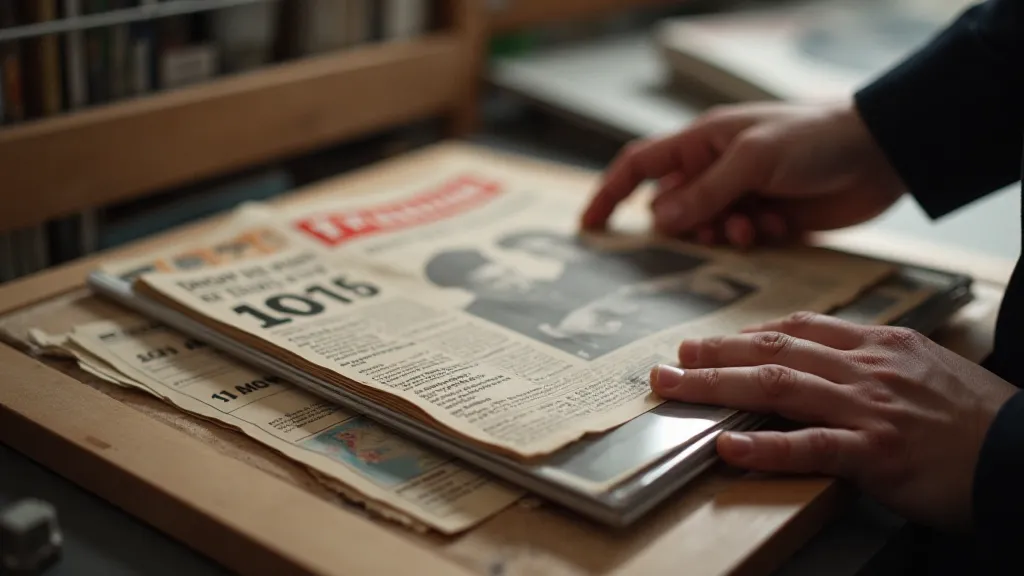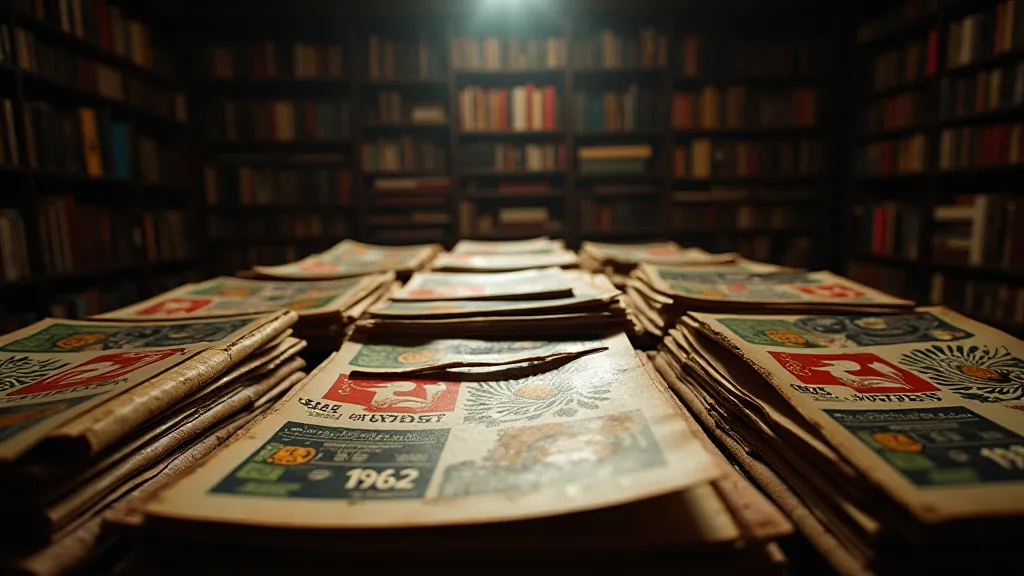The Ephemeral Archive: The Responsibility of Collectors in Preserving Television History
There’s a peculiar melancholy that accompanies handling a vintage TV Guide>. It’s not simply the scent of aged paper, the brittle feel of the binding, or the faded colors of the covers. It’s the tangible connection to a moment, a culture, a collective experience now lost to the relentless march of time. Like a perfectly preserved butterfly pinned to velvet, each TV Guide is a snapshot of a bygone era, a fleeting glimpse into the entertainment that captivated millions. And as collectors, we bear a unique responsibility – the responsibility to safeguard these fragile artifacts and ensure they aren’t lost forever.
I remember as a child, rummaging through my grandfather’s attic. Dust motes danced in the shafts of sunlight filtering through cracks in the boarded-up windows, illuminating forgotten treasures. He wasn’t a dedicated collector in the modern sense, but he sparked my own passion. Amongst stacks of old National Geographics and forgotten holiday souvenirs, I found a box filled with TV Guides from the 1950s. The vibrant colors of Lucille Ball’s cover on a 1954 issue, the simple, elegant typography—it felt like stepping into a portal. He’s no longer with us, but the memory of that discovery, the sheer joy of holding those pieces of history, fuels my commitment to preserving these incredible resources.
The Golden Age: 1950s Television and the Rise of the Guide
The 1950s represent a pivotal moment in American history, and television was undeniably at the center of it all. Following the post-war boom, television sets became increasingly affordable and widespread. Families gathered around the flickering black and white screen, sharing experiences and forming a sense of national community. The era’s programming—from the vaudeville-inspired variety shows to the groundbreaking dramas—defined a generation. TV Guide, first published in 1953, quickly became an indispensable companion. It wasn’t just a listing of programs; it was a cultural touchstone, featuring celebrity profiles, crossword puzzles, and reviews. The early editions, particularly those from 1953-1956, hold immense value and are highly sought after by collectors. These aren't just pieces of paper; they are first-hand accounts of a cultural revolution. The humor and satire prevalent in shows of the period, and the ways they reflected and shaped societal norms, offer a fascinating window into the times—something that’s often explored further when delving beneath the glossy covers of these iconic publications.

The Evolution of the Guide: From Weekly Listing to Cultural Reflection
The 1960s saw significant changes in television programming and in the design and content of TV Guide. The rise of color television impacted cover design, leading to more vibrant and visually arresting covers. The programming itself became more diverse, reflecting the social and political upheavals of the decade. The Vietnam War, the Civil Rights Movement, and the burgeoning counterculture all found their way onto the screen, and consequently, into the pages of TV Guide. The "TV Tips" section became more sophisticated, the reviews more critical, and the overall tone evolved to reflect a more complex and questioning society. The shift from simple listings to editorial content was a key factor in the magazine's continued success, but it also signaled a move away from its earlier, more straightforward role as a program guide.
Pre-1970s issues are especially significant because they represent the formative years of television broadcasting and the guide itself. Understanding the history of these issues—the subscription history, the printing processes, the distribution networks—is crucial to accurately assessing their value and significance. Early issues, particularly those from the late 1950s and early 1960s, often command a premium on the collector’s market. The rarity of certain issues can be driven by factors such as printing errors, regional variations, or simply limited distribution. Beyond the factual listings, the evolution of comedy itself, and its impact on television’s narrative arc, provides compelling insights—a theme often revisited when examining the ways in which TV Guide curated the television landscape. The magazine actively shaped not just what people watched, but also how they perceived it.
Craftsmanship and Condition: What to Look For
As with any collectible, the condition of a TV Guide greatly influences its value. "Mint" condition copies are exceptionally rare and command top prices. However, even copies in “fair” or “good” condition can hold significant historical value. Collectors often focus on rarity, but condition is equally important. Look for signs of wear and tear, such as tears, creases, stains, and water damage. A faded cover, while detracting from aesthetic appeal, isn’t necessarily a deal-breaker, as it’s often a sign of authenticity. However, significant damage can significantly reduce the value. Understanding the printing process of the era – the types of paper used, the printing inks – can help you identify genuine vintage copies and spot potential reproductions. The subtle nuances in color palettes, typography, and advertising techniques provide valuable clues to a publication’s authenticity and historical context. For those starting their collecting journey, deciphering the grading system and identifying potential forgeries can feel overwhelming. Resources like a collector’s codex provide essential guidance, offering practical tips on authenticating first edition memorabilia and avoiding common pitfalls.
The Responsibility of Preservation: Digital Archives and Beyond
The digital age presents both challenges and opportunities for collectors. While physical preservation remains paramount, the creation of digital archives—like the one we’re building here—is essential to ensuring long-term accessibility. Scanning and cataloging these ephemeral treasures allows future generations to experience the history they represent, even if the original physical copies are lost or damaged. The fragility of paper necessitates proactive measures. Proper storage—away from direct sunlight, heat, and humidity—is crucial. Archival-quality sleeves and binders are a worthwhile investment.

Beyond the Value: Connecting with History
Ultimately, collecting TV Guides isn’t just about monetary value. It's about connecting with a pivotal era in American history, about preserving a tangible link to the past. It's about appreciating the craftsmanship of the magazine’s design and the artistry of the programs it chronicled. And it’s about sharing that passion with others, ensuring that these invaluable pieces of television history continue to be appreciated and cherished for generations to come. The joy isn't in the acquisition, but in the understanding - the deeper appreciation for the cultural landscape that shaped our world. Examining the advertising strategies employed within TV Guide, and how they reflected the shifting consumer trends of the time, provides valuable insights into the broader economic and social forces at play. Understanding the data behind subscription trends also reveals fascinating patterns about audience engagement and the evolving popularity of television programming.
The responsibility lies with us, the collectors, to act as stewards of these ephemeral archives, ensuring that the voices and stories of the past are not silenced by the relentless passage of time. We aren’t simply accumulating magazines; we are safeguarding memories.

For those new to collecting, navigating the world of vintage TV Guides and authenticating first editions can be a daunting task. Numerous factors contribute to a magazine's value, including its condition, rarity, and historical significance. Resources dedicated to providing invaluable knowledge offer essential guidance on identifying authentic copies, understanding grading systems, and avoiding common pitfalls.





